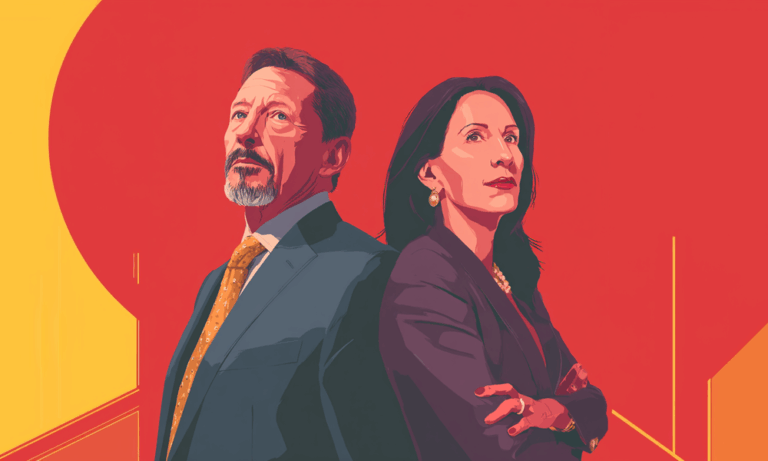Microsoft’s Playbook for Thriving in Uncertainty

BCG recently outlined five essential actions for CEOs to maintain confidence in turbulent times. Microsoft offers a vivid example of how these strategies can drive bold pivots and help companies seize new opportunities. In a world that never stands still, preparation and agility make all the difference.
In today’s unpredictable business landscape, strategic planning can feel like navigating a ship through a hurricane. The Boston Consulting Group (BCG) recently offered five excellent actions for CEOs to find confidence amidst this volatility, including leveraging “living” driver-trees, scenario planning, rolling forecasts, investing in forward-looking assets, and maintaining AI momentum. These are undoubtedly powerful tools, demonstrated by companies like Microsoft, which successfully orchestrated a massive strategic pivot to dominate new frontiers.
However, based on ongoing work around robust risk management and agile strategic execution, I think that companies can sharpen their focus even further. Here are three additional lenses that can significantly enhance strategic confidence when the only constant is change.
1. Integrate Robust Risk Assessments Directly into Scenario Planning
BCG rightly advocates for using scenarios to find a base case. But organizations should take this a step deeper: don’t just identify potential futures; deeply embed explicit, comprehensive risk assessments within each one.
For every “what if” scenario explored – whether it’s a new market opportunity, a disruptive technology, or an economic downturn – companies should meticulously map out the specific internal and external risks it introduces. They should think beyond general uncertainties; they should pinpoint specific supply chain vulnerabilities, regulatory hurdles, cybersecurity threats, or talent acquisition challenges that each scenario might amplify.
By assessing the likelihood and potential impact of these risks for each future state, companies move beyond mere foresight to proactive preparation. This allows for the development of pre-emptive mitigation strategies or contingency plans directly tied to a chosen path, making the strategic response truly confidence-driven, not just speculative.
For instance, when Microsoft made its massive pivot to cloud computing with Azure, it was not a simple “build it and they come” strategy. They engaged in extensive scenario planning around market adoption, competition (especially from AWS), and technological advancements. One crucial aspect involved anticipating and preparing for geopolitical risks such as varying data sovereignty laws (like GDPR) or government demands for data access impacted global adoption. Microsoft’s response included building a vast network of regional data centers and developing sophisticated compliance certifications (e.g., ISO 27001, FedRAMP, GDPR compliance tools). Their recent initiatives, like the “EU Data Boundary,” directly address the geopolitical risks identified in their scenario planning, reassuring European customers about data storage within the EU/EFTA regions. This foresight allowed them to offer solutions that mitigated these risks, bolstering customer confidence and accelerating Azure’s adoption.
2. Develop a Dynamic Early Warning System for Key Strategic Assumptions
While identifying leading indicators for revenue is vital, organizations should extend this principle to all critical assumptions underpinning their strategic plan. Strategy is not just built on numbers; it is built on beliefs about market behavior, competitive actions, technological evolution, and customer preferences.
Companies should create a dynamic system to continuously monitor the validity of these core strategic assumptions. If a growth strategy hinges on a specific adoption rate for a new technology, or a stable competitive landscape, top managers should set up triggers and metrics that alert their leadership team if these assumptions begin to deviate significantly.
Read also: Sailing in the Dark: the Vendée Globe as an Allegory for Entrepreneurship
This “early warning system” should be intrinsically linked to rolling forecasts. It enables rapid re-evaluation and adjustment of the strategic course before a small crack becomes a chasm. It shifts an organization from reactive crisis management to proactive, informed adaptation, ensuring its strategy remains relevant and resilient.
For instance, Microsoft’s current strategic focus is heavily on AI, particularly generative AI and the integration of Copilot across its product suite. This strategy is built on several core assumptions, such as the rapid and widespread enterprise adoption of generative AI tools. To manage this, Microsoft has to employ a dynamic early warning system with metrics to monitor analysis of early adopter feedback for Copilot, growth rates of specific Azure AI services related to large language models (LLMs), and real-time tracking of competitor AI product launches and pricing. If, for example, pilot program feedback showed low user engagement or a competitor released a highly disruptive, user-friendly AI model at a lower price point, it can trigger an internal review, leading to rapid product adjustments or revised marketing strategies. This proactive monitoring ensures their AI strategy remains agile and relevant.
3. Align Risk Appetite with Strategic Ambition
This is perhaps the most fundamental alignment necessary for confidence. In turbulent times, the instinct might be to become overtly risk-averse. Yet, ambitious strategies – whether for market leadership, disruptive innovation, or significant growth – inherently involve taking calculated risks.
If strategic ambition (e.g., global expansion, pioneering a new product category) is misaligned with an organization’s actual risk appetite (e.g., highly conservative, low tolerance for new market entry), the strategy is doomed to either stagnate or create significant internal friction. Conversely, an overly aggressive risk appetite without a clear, defined strategic purpose can lead to reckless, undirected ventures.
A clear, consciously defined, and communicated risk appetite provides the foundational principle for all strategic decisions. It guides how much to invest in forward-looking portfolio assets, how quickly to pivot based on leading indicators, and which scenarios companies are willing to pursue. When an entire leadership team shares a clear understanding of the acceptable level of risk for achieving its strategic goals, every decision becomes more coherent, confident, and ultimately, more impactful.
Read also: Did Oracle Crack the Leadership Code?
In the case of Microsoft, it is clear that its strategic ambition to lead the AI revolution is undeniably aggressive. This ambition is directly aligned with a high, albeit calculated, risk appetite. Their multi-billion dollar investment in OpenAI (reportedly $13B+) and continuous massive infrastructure spending for Azure AI represent a substantial financial commitment. This indicates a high appetite for investment risk in a nascent, rapidly evolving technology. While pioneering in AI comes with significant ethical and reputational risks (e.g., concerns about bias, misinformation), Microsoft has actively engaged in responsible AI initiatives, publishing principles and building tools to mitigate these, showing a managed approach to ethical risk. This clear alignment between their bold strategic ambition and a defined, high-level risk appetite for growth has allowed them to pursue transformative AI leadership.
Integrating these three additional lenses – deep risk integration in scenarios, dynamic assumption monitoring, and clear risk-appetite alignment – will not only enhance the existing BCG recommendations but also empower organizations to navigate volatility with genuine confidence. It’s about building a strategic framework that is not just reactive, but intelligently adaptive and fundamentally resilient.



